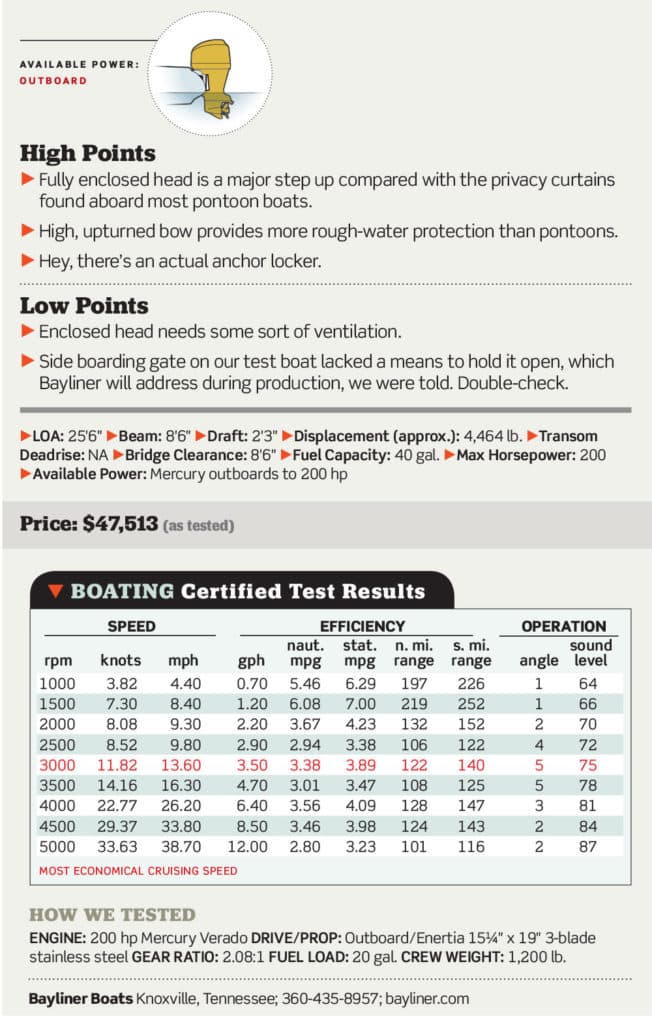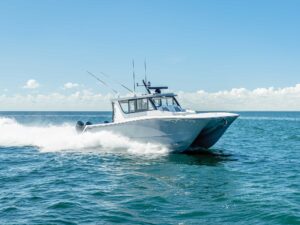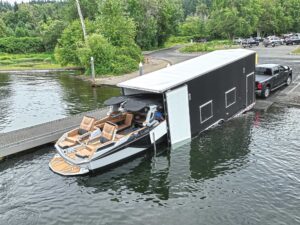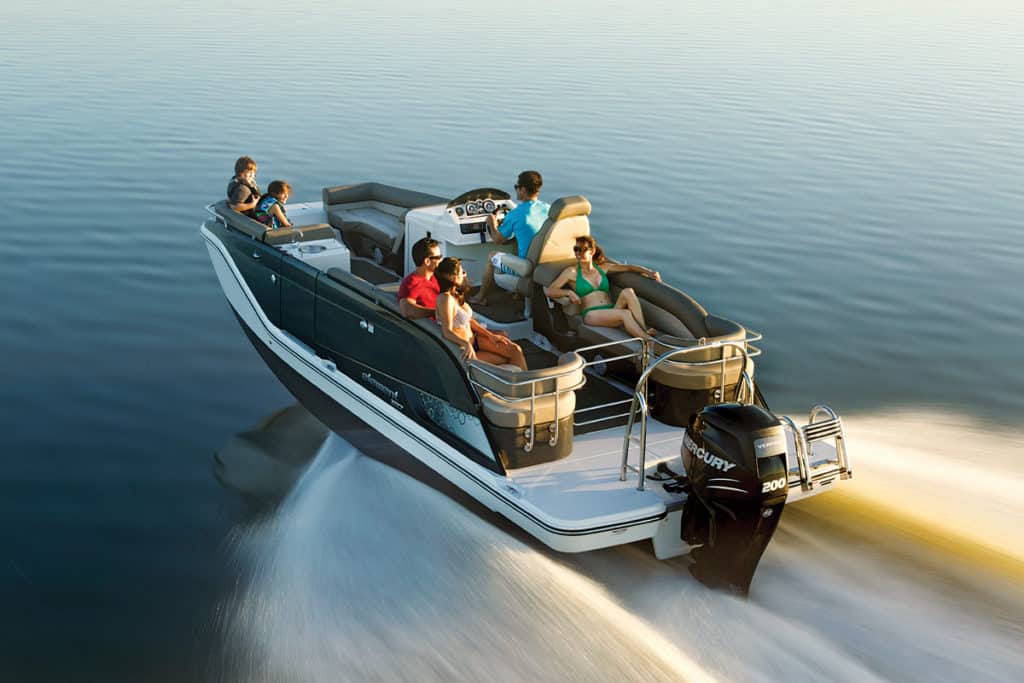
Beam: 8’6″
Dry Weight: 4,464 lb.
Seating/Weight Capacity: 16/2,214 lb.
Fuel Capacity: 40 gal.
More Information: bayliner.com
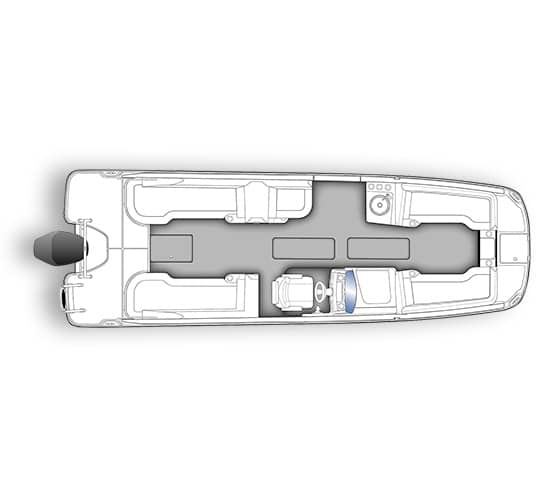
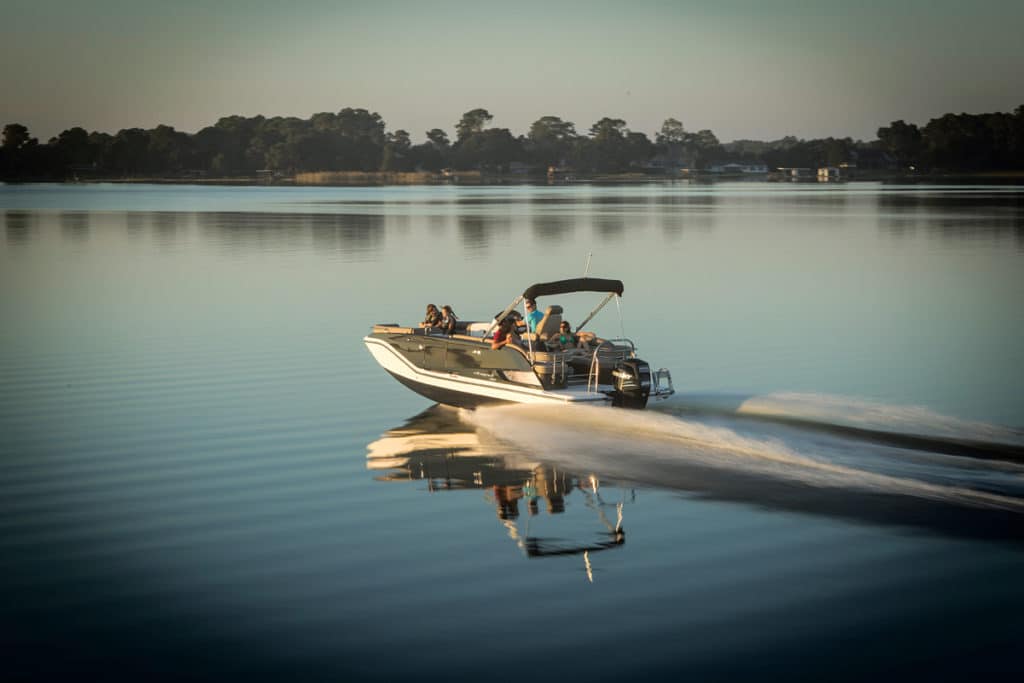
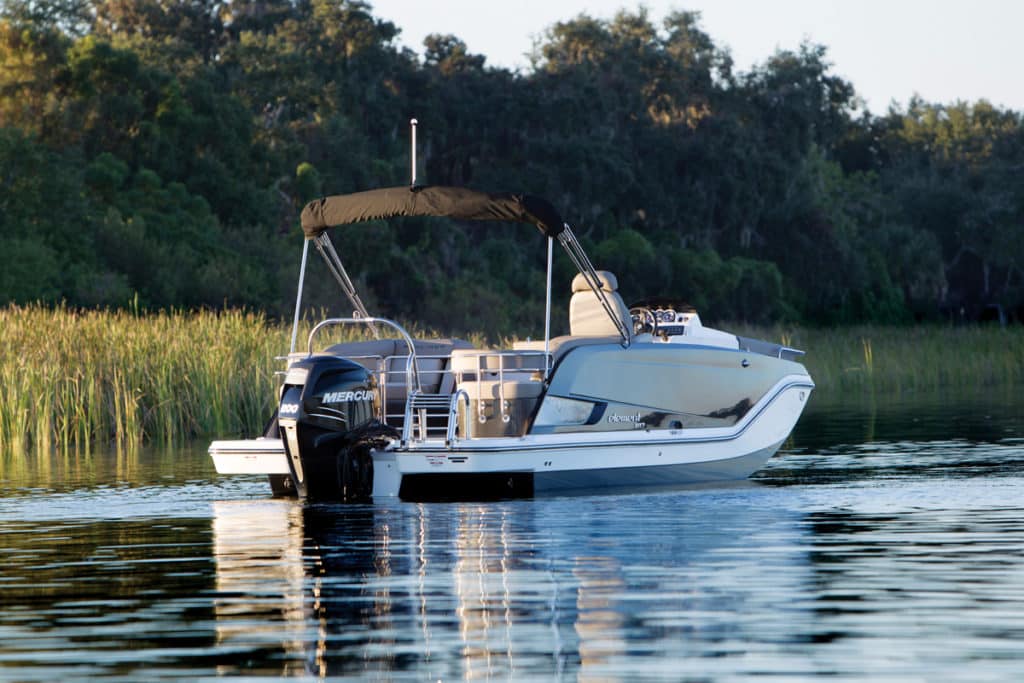
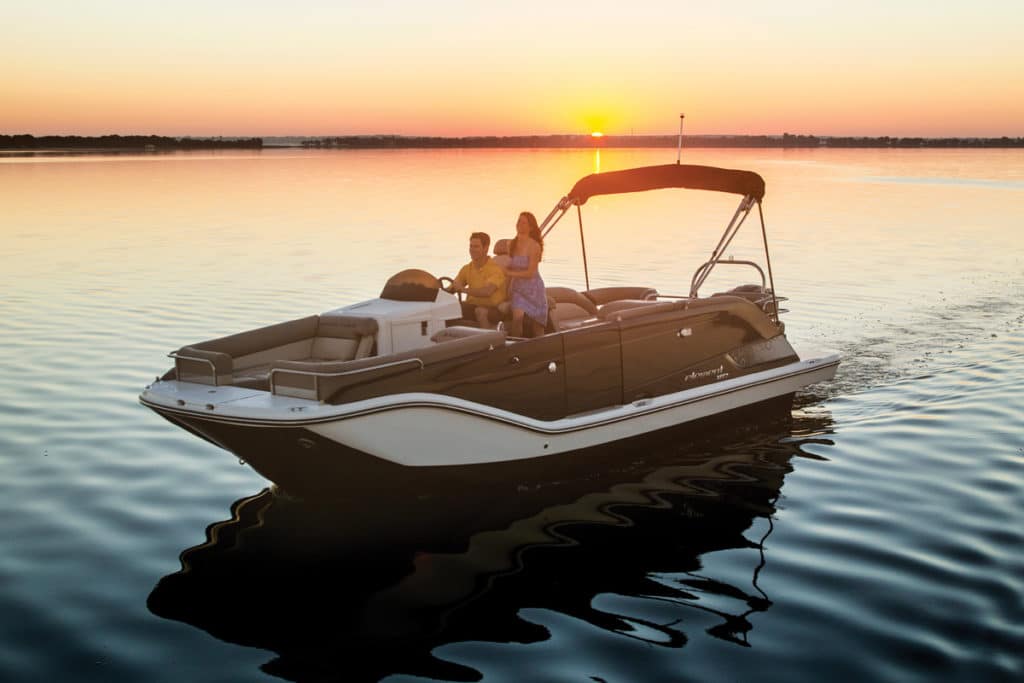
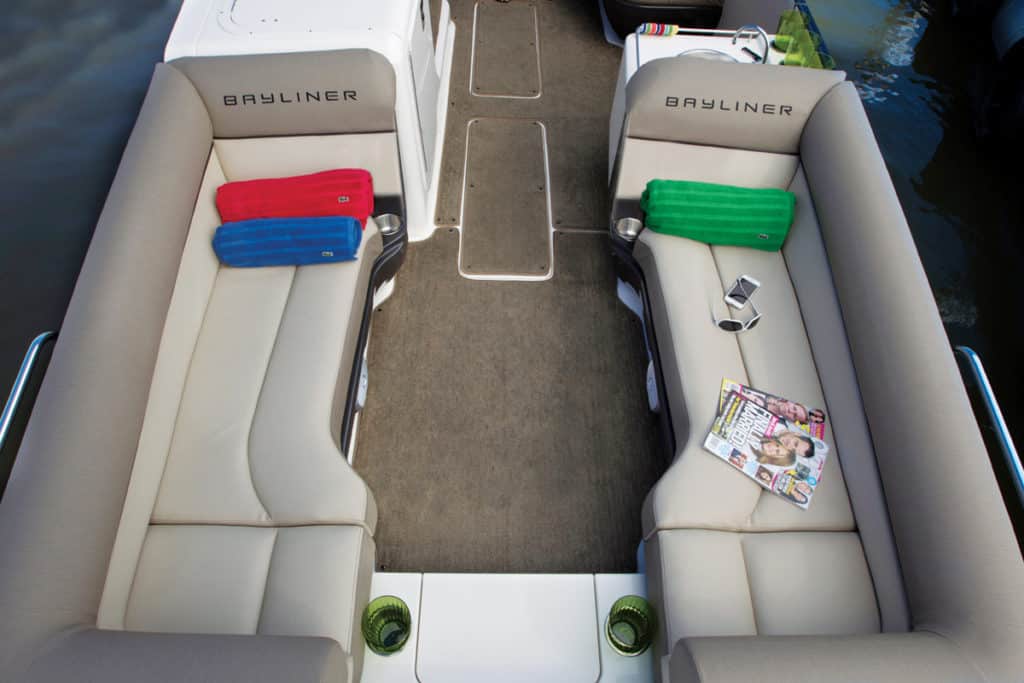
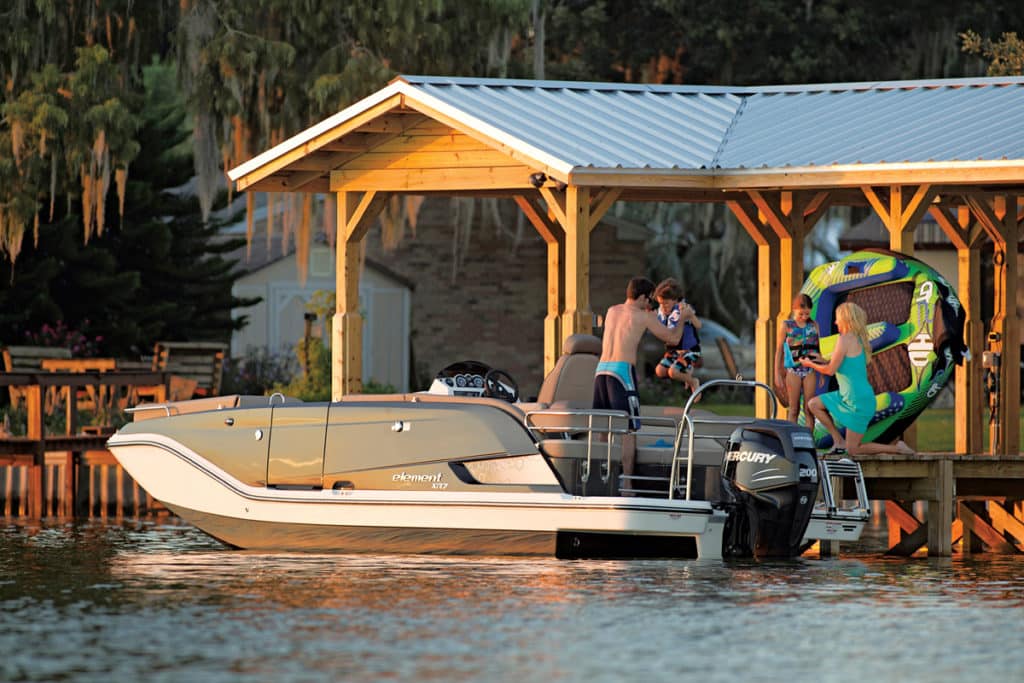
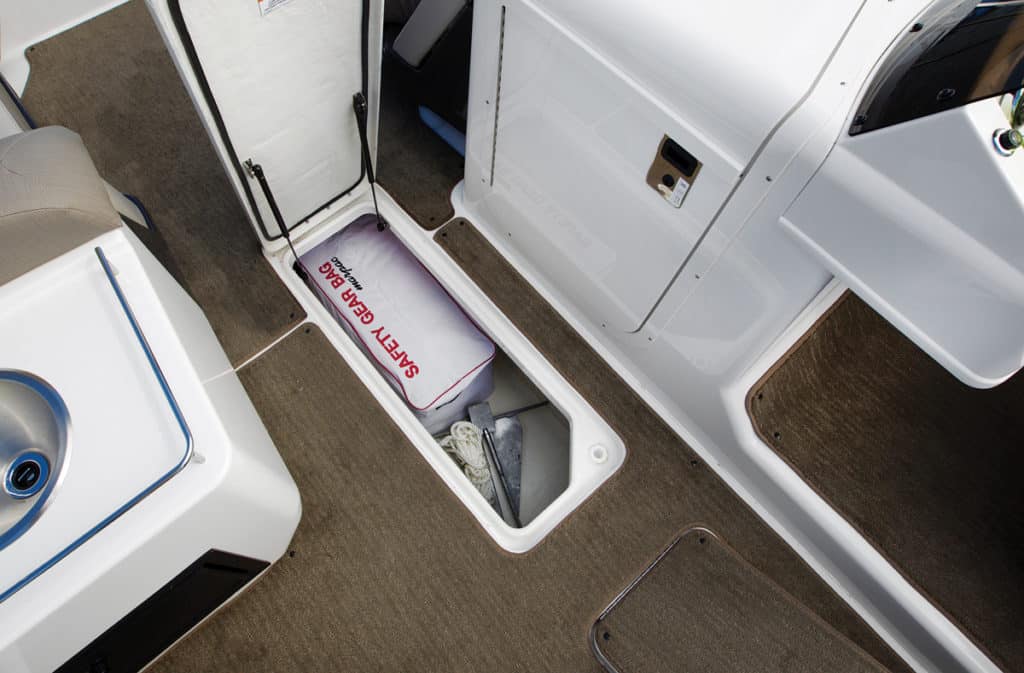
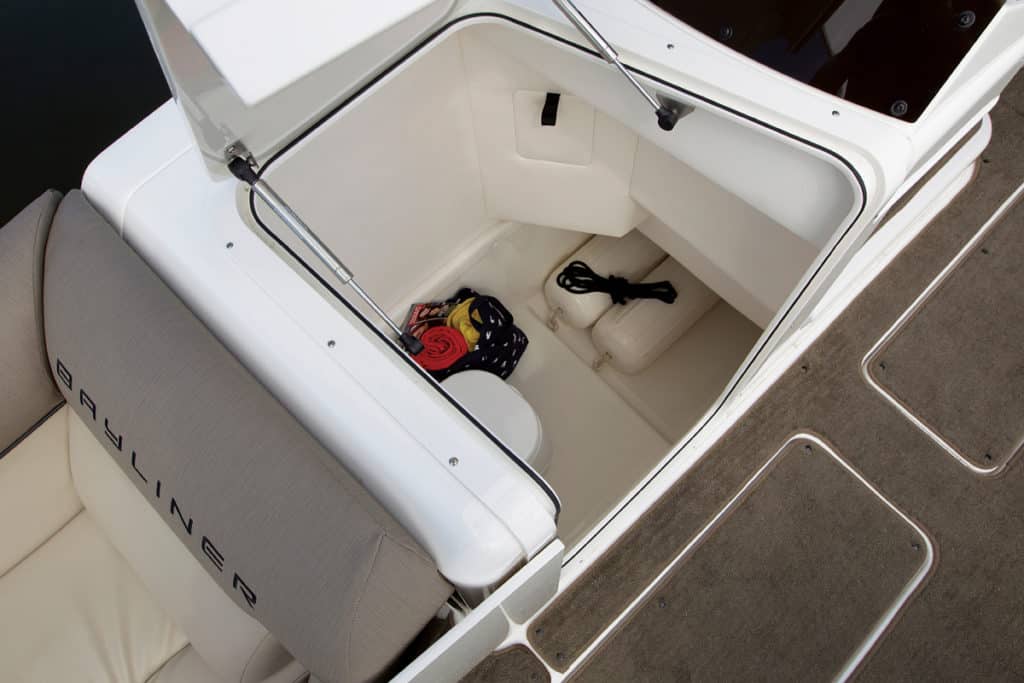
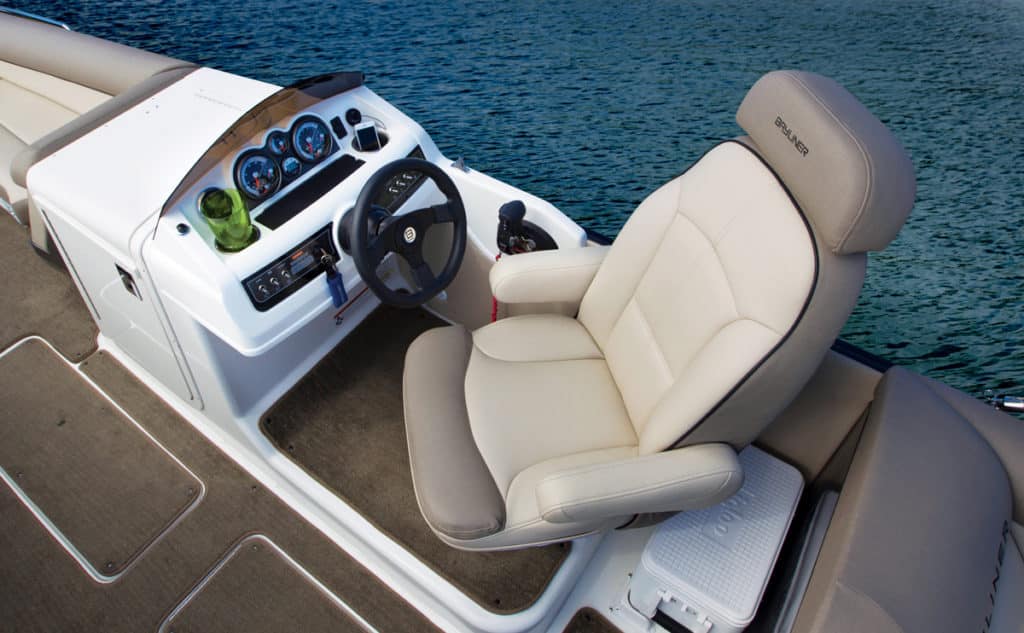
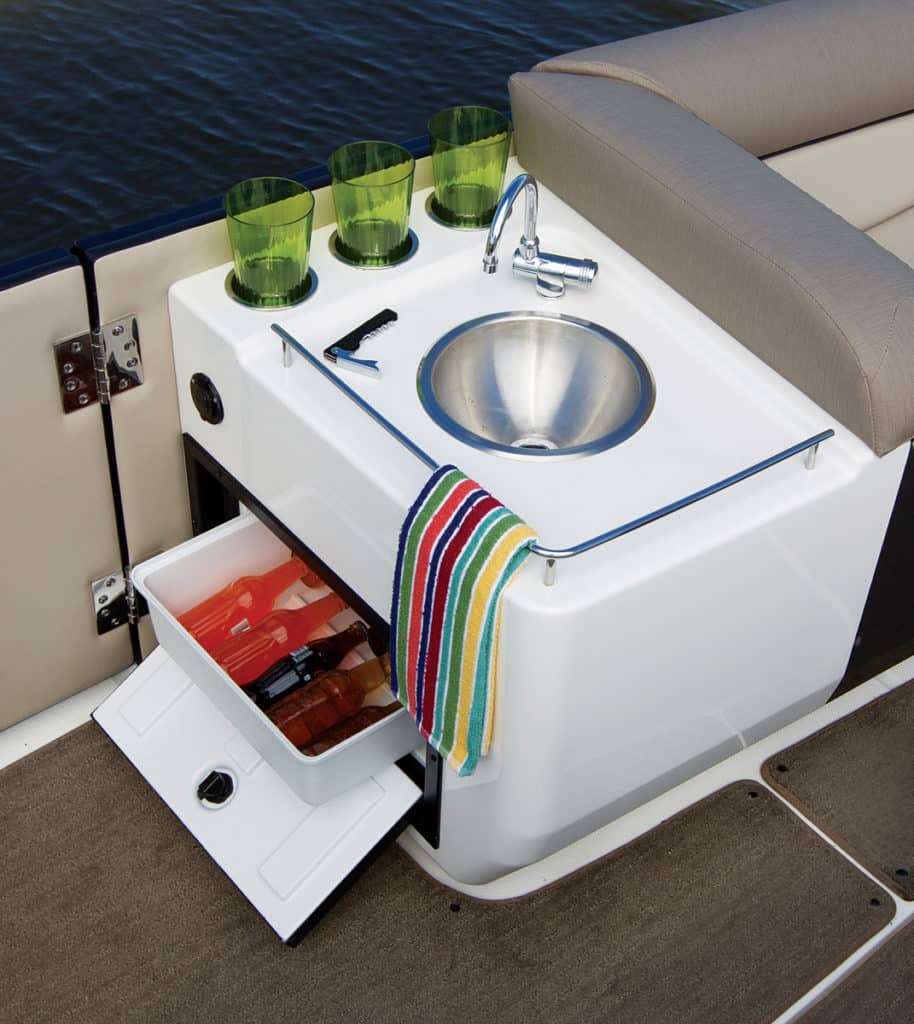
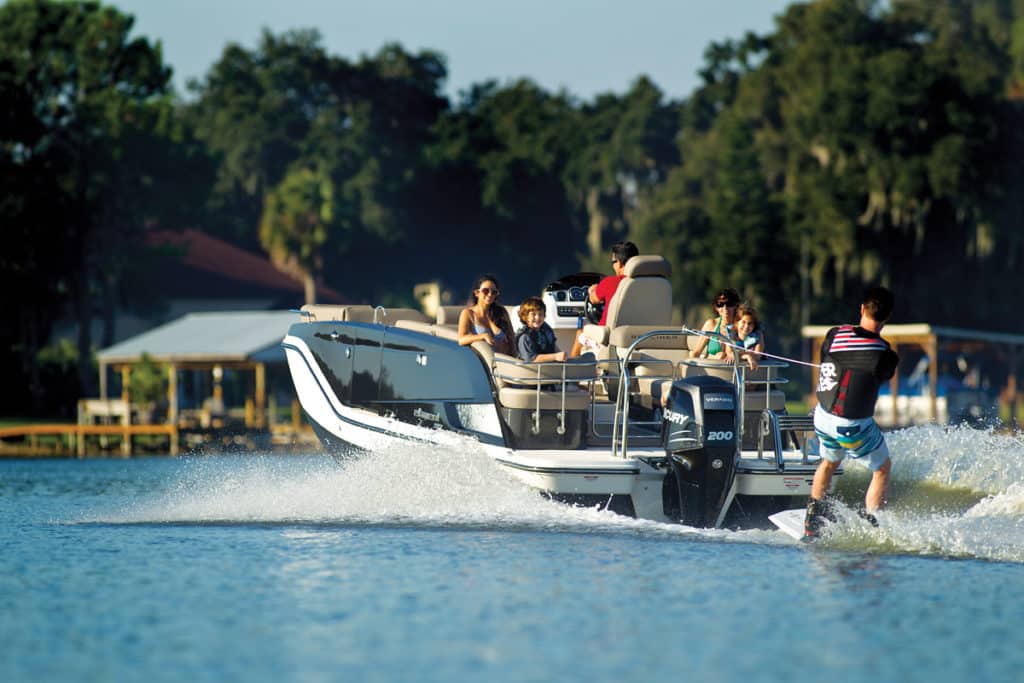
Anyone who follows the latest trends in boats — especially those of us who do it for a living — has taken note of the rapid rise in popularity of pontoon boats over the last few years. So it’s no surprise that Bayliner — a company with an ear well tuned to its customers’ feedback — decided to build a boat that appeals to pontoon lovers. Bayliner’s new Element XR7 is a pontoonish boat without the actual aluminum pontoons. Instead, the deck is mated to an honest-to-goodness fiberglass hull, providing an alternative to boaters who love the spaciousness of a pontoon layout but aren’t so enamored with aluminum.
Fortunately for Bayliner, it didn’t have to go too far afield to find the right hull form. In 2013, Bayliner struck gold with its launch of the Element, an economical, spacious and practical runabout that appeals to first-time boaters. Last year, Bayliner came out with the XL version, which upped the standard horsepower from 60 to 90 and the length overall (LOA) from 16 feet to 18 feet. Bayliner built the Element on a hull form it calls the M-hull.
The M-hull is ideal for a ’toon style because it has a few of the same attributes — predictability, ease of planing and stability at rest. The M-hull works like a trimaran, with the V running down the centerline and two V-shaped sponsons outboard with hard chines. Instead of tapering flat aft, the sponsons maintain their V all the way to the stern. Since it seems so adaptable for a pontoon-style layout, Bayliner integrated that, extending the centerline to 22 feet and widening the beam to 8 feet 6 inches. The bow and stern platforms extend the length overall to 25 feet 6 inches and provide fore and aft water access that’s hard to beat.
The fiberglass components allow Bayliner some advantages over traditional pontoons, including two gigantic ski lockers set into the fiberglass sole. Also, whereas most pontoons employ a fold-out canvas “privacy” curtain for changing and using the loo, the XR7 has an enclosed head in the starboard console. Space in the console extends forward to provide additional storage. The helm itself is raised 5 inches off the deck to give the skipper a better view of the water from the high-back captain’s chair. We find these raised helms a necessity aboard boats with pontoon-style deck layouts, because crowds tend to sit together in front of the helm.
To prove its pontoonlike capabilities, we tested the XR7 with a crew of six and the Bimini top deployed and still approached 40 mph. We climbed onto plane in about four seconds and felt safe and secure at the helm and from every seat. It did porpoise a bit at wide-open throttle, but Bayliner said that after further testing it would adjust the engine mount in production to negate that.
There are now several ’toons out there with performance packages that incorporate a third centerline tube that helps them approach fiberglass V-hulls in speed and handling. Pontoons with triple tubes also can offer at least one deep in-sole ski locker in the center tube. Since the XR7’s centerline length is 22 feet, it compares most directly with pontoons like the SunChaser 8522 LR ($31,730 with an Evinrude 150 E-TEC). The SunChaser posted slightly slower numbers with a 150 hp outboard and displayed agile handling thanks to its RPT technology, which includes shaping the tubes to include keels and chines. Another triple-tube pontoon we tested, the Lowe Xtreme 230 (price is not available) broke 45 mph with a Mercury 250 Verado and also displayed agile handling. That said, the Element XR7’s fiberglass hull curves upward in the bow to deflect spray and provides passengers with more rough-water protection than an aluminum pontoon can.
The XR7’s deck plan is all pontoon. The forward seating includes opposing couches (a ’toon term) with forward-facing backrests, flip-up armrests and storage underneath. There’s an actual anchor locker in the bow, a rare commodity on an aluminum pontoon. The side-boarding gate to port helps at the dock — though our tester lacked a strap or chock to hold it open — and more seating can be found in the main cockpit. The entertainment center has the option for a fridge, and the aft rear-facing lounges are protected by stainless-steel rails. Instead of an extended swim platform, Bayliner employs extended swim steps around the outboard that provide ample space for water access. Note too how the boarding ladder angles away from the outboard’s propeller. The XR7 offers the one layout; most pontoons have choices.
Bayliner is not the first fiberglass builder to incorporate a pontoon-style deck. Hurricane has been building FunDecks for years, and the 226 FunDeck ($42,075 with a 150 hp Yamaha) boasts similar dimensions to the XR7’s, though with a boxier profile and without the built-in fiberglass head. While both hold an advantage over aluminum in salt water, of the two the Element XR7 has the sleekest lines and looks to have the better rough-water capability, thanks to the M-hull. We found that the XR7 could handle small-boat wakes and manufactured chop without taking any spray into the cockpit, and (more importantly) without jarring any of the passengers around.
Overall, with the new Element XR7, Bayliner looks like it’s onto something. If it can merge the original mission of the Element — to bring affordability and simplicity to the entry-level boater — with a pontoon boat’s stability and sociability, then it’s win-win.
Comparable model: Hurricane 226 FunDeck
